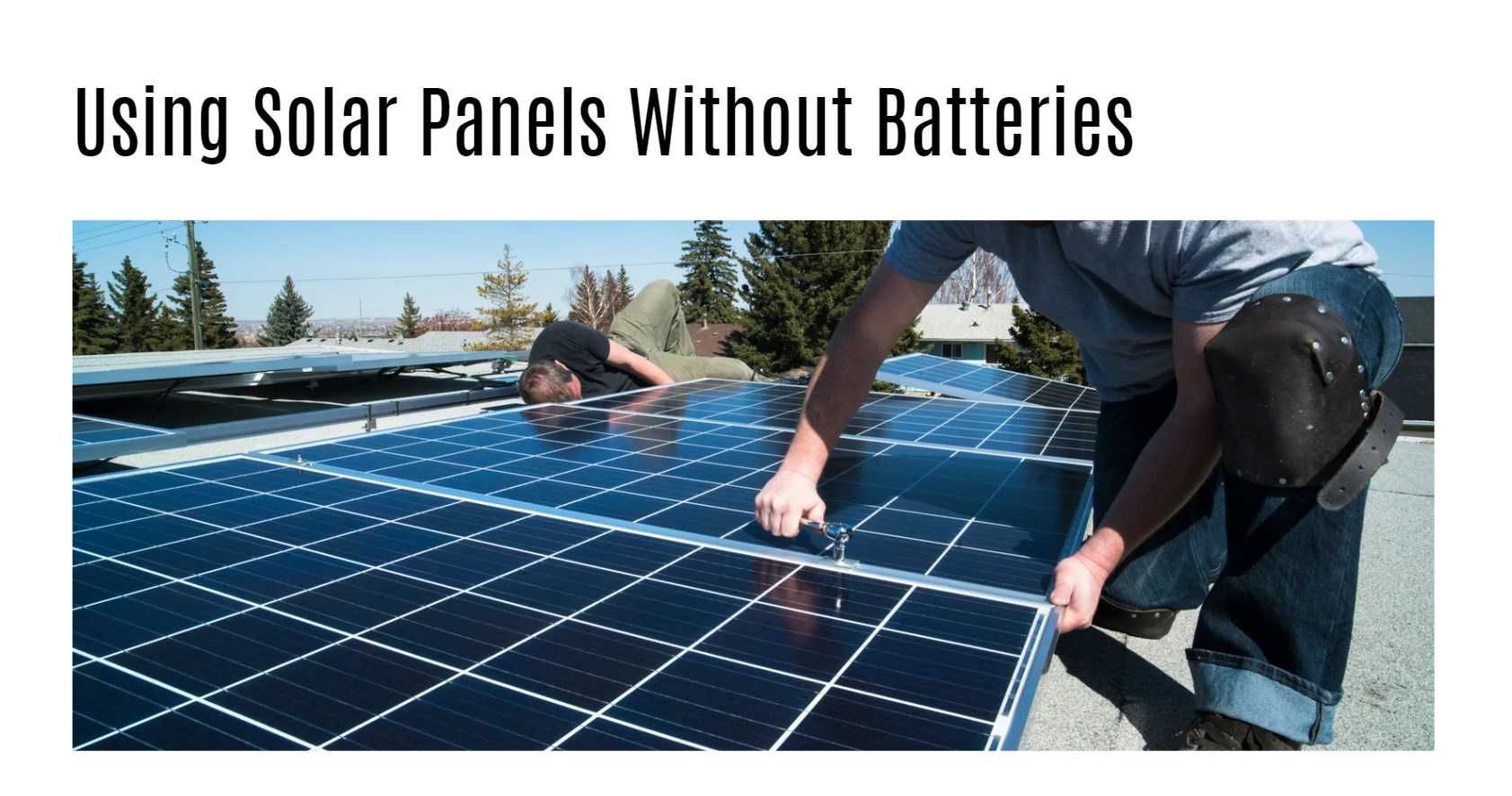Solar energy has become increasingly popular as a sustainable and renewable energy source. Solar panels, which convert sunlight into electricity, are central to this technology. However, there are many questions about the feasibility of using solar panels without batteries. This guide will delve into the practicality of a battery-free solar system, outlining the necessary components, benefits, and common concerns.
Understanding Solar Energy Systems
Key Components of a Solar Energy System
A complete solar energy system includes several critical components:
- Solar Panels: These devices consist of photovoltaic cells that convert sunlight into direct current (DC) electricity.
- Inverters: These convert the DC electricity generated by the solar panels into alternating current (AC) electricity, which is suitable for household use.
- Racking Systems: These are used to mount the solar panels securely on rooftops or other structures.
- Batteries (Optional): These store excess electricity generated during the day for use during times when solar production is low.
Types of Batteries in Solar Systems
While batteries are not mandatory, they can enhance the efficiency and reliability of solar systems. Various types of batteries are used, each with distinct advantages:
- Lithium-Ion Batteries: Known for high efficiency and energy density.
- Lead-Acid Batteries: Praised for their recyclability and cost-effectiveness.
- Nickel-Cadmium Batteries: Require low maintenance and have a long lifespan.
- Sodium Nickel Chloride Batteries: Offer high energy density and safety.
Using Solar Panels Without Batteries
Grid-Tied Solar Systems
It is entirely possible to operate solar panels without batteries by using a grid-tied system. In this setup, the solar panels generate electricity during the day. Any excess energy produced is sent back to the grid. During periods of low solar production, such as early mornings, evenings, or cloudy days, power is drawn from the grid.
Advantages of Grid-Tied Systems
- Cost Savings: Eliminates the need for expensive battery storage.
- Net Metering: Excess energy sent to the grid can earn credits to offset electricity bills.
- Simple Maintenance: Fewer components mean less maintenance.
Practical Applications
A 5kW solar system without a battery is ideal for locations with monthly electricity bills ranging from ₹5,000 to ₹10,000 during peak seasons. This setup is especially useful in areas with reliable grid infrastructure.
Benefits of Incorporating Battery Storage
While using solar panels without batteries is feasible, adding batteries can provide significant benefits:
- Energy Storage: Excess energy generated during the day can be stored and used later, reducing reliance on the grid.
- Backup Power: Batteries provide a backup power source during outages, ensuring continuous electricity supply.
- Reduced Carbon Footprint: Storing and using solar energy more effectively can decrease your overall environmental impact.
- Energy Independence: Batteries can help achieve greater energy independence, especially in areas with unstable grid supply.
Frequently Asked Questions
1. Can I use solar panels without batteries?
Yes, you can use solar panels without batteries by relying on a grid-tied system to ensure continuous power supply during periods of low solar production.
2. What are the main components of a solar energy system?
The main components are solar panels, inverters, racking systems, and optionally, batteries.
3. What types of batteries are used in solar panels?
Common types include lithium-ion, lead-acid, nickel-cadmium, and sodium nickel chloride batteries.
4. Can I use solar panels and inverters without battery storage?
Yes, but you will need to rely on the grid for power during periods of low solar production.
5. Why are batteries necessary for off-grid PV systems?
Batteries ensure voltage and frequency stability and store energy for use when solar production is low.
6. Can a grid-tied or hybrid inverter be used without a DC to DC converter?
No, because these inverters require a stable voltage reference, which is provided by the DC to DC converter.
7. What are the benefits of solar battery storage?
Solar battery storage allows for storing excess electricity, provides backup power during outages, reduces your carbon footprint, and ensures electricity availability after sunset.
8. What happens with excess generated energy in a solar panel system without a battery?
Without a battery, excess energy is typically sent back to the grid, where it can earn credits through net metering systems.
9. Where can a 5kW solar system without a battery be used?
It is suitable for locations with monthly electricity bills ranging from ₹5,000 to ₹10,000 during the summer.
10. What are the pros and cons of using a solar panel directly without a battery?
Pros: Cost savings on batteries, ability to power small and medium loads during blackouts. Cons: Inability to power loads at night, lack of backup power on cloudy days, and limitations on load power demands compared to solar panel generation.
Conclusion
Using solar panels without batteries is a practical and cost-effective option for harnessing solar energy. By implementing a grid-tied system, you can ensure a consistent power supply and make efficient use of excess energy through net metering. However, incorporating battery storage can provide additional benefits such as energy independence, backup power, and a reduced carbon footprint. Evaluate your specific energy needs and consult with professionals to determine the best setup for your solar panel system.





